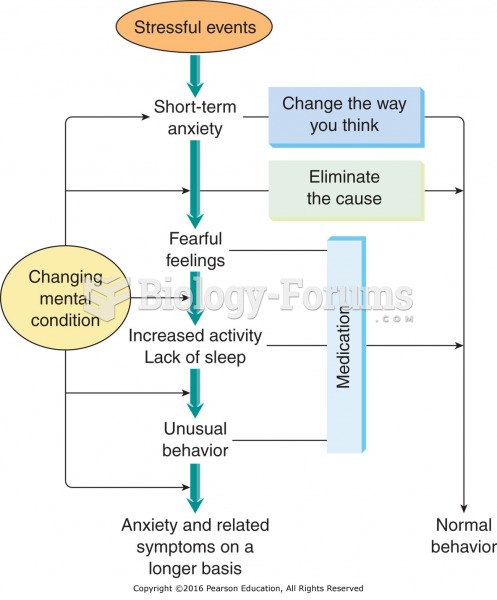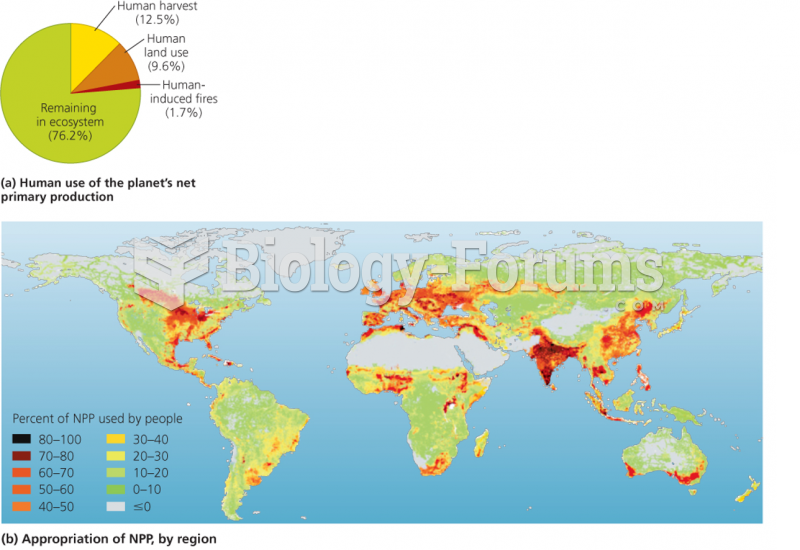Answer to Question 1
Motor Carriers
Motor carriage is the most widely used mode of transportation in the domestic supply chain, ranging from the smallest delivery van to the largest tractor-trailer combination. The sophisticated U.S. highway network permits trucks to reach all points of the country. This accessibility combined with the industry's excellent service capabilities, has made trucking the mode of choice for high-value, time-sensitive goods.
The trucking industry is highly competitive and made up of 502,000 private, for hire, and other U.S. interstate motor carriers. There are no significant cost economies of scale that make it impossible for small carriers to compete. Most expenses are incurred as the result of moving freight; thus, trucking is a high-variable-cost, low-fixed-cost business.
Much of the freight moved by the trucking industry is regional in nature, moving within a 500-mile radius of the origin. The trucking industry is comprised of for-hire and private fleet operations. Private fleets primarily transport freight that is owned by the organization that is operating the trucks.
Motor carriers face daunting challenges in the futurerising costs, labor issues, and competition. Trucking companies are able to pass along rising fuel and insurance costs during economic expansions, but cannot always do so if capacity exceeds demand. A shortage of truck drivers will only become more serious as current drivers retire. Finally, competition will remain fierce, with customers expecting near-perfect performance.
Railroads
Railroads transport more than 1.9 billion tons of freight annually despite a lack of direct accessibility to all parts of the supply chain. Rail service is perceived as being a slow, inflexible, and inconsistent mode.
The industry is dominated by seven Class I railroads (revenues in excess of 379 million). None of these major rail carriers services the entire country by itself; they work together via interline agreements to provide coast-to-coast rail service. This mode requires a large investment in terminals, equipment, and trackage to begin operation; the accompanying huge capacity allows railroads to be a decreasing cost industry. As output (ton-miles) increases, the average per-unit production cost decreases.
Rail transportation is primarily used for the long-distance movement of low value raw materials and manufactured products but they also handle some high-value goods, primarily automobiles and intermodal containers filled with imported finished goods. In fact, intermodal volume is rising faster on a percentage basis than traditional rail freight.
The rail industry faces a number of challenges moving forward. Capacity is an ongoing concern. With the track infrastructure remaining largely unchanged, additional freight, crews, and equipment cannot dramatically impact system delays.
Air Carriers
The advent of e-commerce, the growth of global supply chains, and initiatives to reduce inventory and order cycle time have contributed to a sustained increase in demand for air transportation. While air cargo transportation remains a small and specialized mode in terms of tonnage, U.S. spending was 33 billion in 2010 . Worldwide, air cargo industry revenues are approaching 594 billion, and freight traffic is projected to grow at an annual rate of 6.1 percent over the next 20 years.
The FAA activity report identifies 88 carriers that are engaged in air cargo, 22 of which are considered major carriers. The air carrier cost structure consists of high variable costs in proportion to fixed costs, somewhat akin to the motor carrier cost structure. Like motor and water carriers, air carriers do not invest heavily in facility infrastructure or byways. The government builds terminals and provides traffic control of the airways. Air carriers pay variable lease payments and landing fees for their use. Equipment costs, though quite high, are still a small part of the total cost. Air transportation is used to ship small quantities of high-value, low-weight, semi-finished, and finished goods.
The air cargo industry faces numerous obstacles to profitable growth, including cost issues, competition, and security challenges. The rising cost of fuel directly impacts the success of the industry. The growth of next-day trucking services is putting pressure on the domestic air cargo industry. Air carriers may find it difficult to pass along increased costs in the face of this growing competition. Finally, the industry is under pressure from costly security mandates, which are estimated to have an annual impact of more than 4 billion on the industry.
Water
Water transportation is a major facilitator of international trade. 115 billion worth of freight and 4.7 percent of the total ton-miles annually is moved via water transportation. Globally, water carriers dominate all other modes, garnering approximately half of the international freight revenue and handling nearly all tonnage. Although very slow and limited by the natural infrastructure, domestic water carriers offer tremendous capacity per vessel, efficient fuel consumption, and low cost.
The economics of water transportation is similar to that of airlines as these carriers require no investment for the right-of-way and government entities known as port authorities provide unloading and loading services, storage areas, and freight transfer facilities. The water carriers pay user fees for these port services only when used. Large oceangoing ships require significant capital investments, but cost is spread over a large volume of freight transported during the lengthy life span of most ships.
The domestic carriers compete vigorously with railroads for long-distance movement of low-value, high-density, bulk cargoes that mechanical devices can easily load and unload. However, water carriers handle a wider variety of goods. Every conceivable type of cargo is transported via international water carrier, from low-value commodities to imported automobiles.
The major challenges faced by carriers in international water transportation relate to capacity, trade imbalances, environmental concerns, and security. Capacity shortages can be a problem when the global economy is growing, but the problem shifted to excess capacity during the global recession. Also, the imbalance of international trade between export-dominant Asian countries and import-dominant North America can create equipment availability problems at the origin and port congestion problems at the destination. The industry must also work to reduce carbon dioxide emissions as ships burning low-grade fuel account for 4.5 percent of all global emissions of this greenhouse gas. Security is a multifaceted challenge that must be addressed. Piracy is a growing problem.
Pipeline
Pipelines handle 5.2 percent of U.S. freight tonnage. This is a unique mode of transportation as the equipment is fixed in place and the product moves through it in high volume. Pipelines effectively protect the product from contamination and also provide a warehousing function. Pipelines provide the most economical form of transportation with the lowest cost per ton of any mode.
The U.S. has the largest network of energy pipelines of any nation in the world. Pipeline costs are predominantly fixed. Pipeline operators must build their own right-of-way, which is a rather expensive proposition. Variable costs in the industry are very low as little labor is required to operate the pipelines and limited fuel is needed to run pumps. The construction of a pipeline becomes cost effective when product flows continuously, allowing the fixed costs to be spread over a high volume of goods.
The vast majority of products moved by pipeline are liquids and gases, the economically feasible products to flow via this mode. The pipeline industry is comprised of for-hire and private carriers that maintain their own infrastructures. For-hire carriers of liquid products can move different products through their system at the same time, separated by a batching plug that maintains the integrity of individual products. Private carriers include petroleum and natural gas companies that use pipelines to move product to and from their refineries, processing plants, and storage facilities.
The ongoing issues for the pipeline industry are safety and security. Compared to other modes, pipelines have enviable safety and environmental records with spills amounting to only one gallon per million barrel-miles. However, vigilance is critical because pipeline accidents can quickly become catastrophic events. Pipeline operators must also be cognizant of security risks and should maintain contingency plans to deal with hurricanes or terrorist attacks.
Intermodal Transportation
Intermodal transportation service refers to the use of two or more carriers of different modes in the origin-to-destination movement of freight. The primary benefits of intermodalism include the greater accessibility that can be created by linking the individual modes; the overall cost efficiency that can be achieved without sacrificing service quality or accessibility; and the fact that intermodal transportation facilitates global trade.
There is strong evidence that intermodal transportation has grown in importance and volume. The number of containers flowing around the world from U.S. ports has increased from 15.5 million TEUs in 1990 to 37.2 million TEUs in 2009 . Experts predict that this trend will continue as the global economy recovers. Domestic flows of intermodal freight have also risen over the same 20-year period. For example, the U.S. rail system moved 8.2 million containers and 1.6 million trailers in 2009 .
Much of this intermodal growth can be attributed to the development of standardized containers that are compatible with multiple modes. Other factors that have contributed to the growth of intermodal transportation include better information systems to track freight as it moves through the supply chain, development of intermodal terminals to facilitate efficient freight transfers between modes, and new generations of ocean vessels, railcars, and truck trailers that handle greater quantities of intermodal freight with greater ease.
A recurring issue in the intermodal transportation market is congestion. Transfer points are not as flexible and can get clogged with freight. Equipment shortages, transfer facility congestion, and labor issues create delivery delays and supply chain disruptions. Infrastructure investment, equipment purchases, and operator hiring will be needed to prepare for the anticipated growth of intermodal transportation.
Answer to Question 2
T







